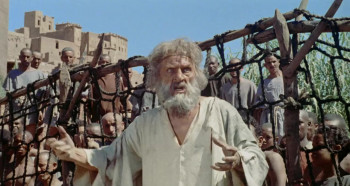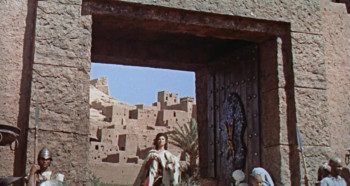Plot summary
Exposed to bad influences since childhood, Mary, a young girl is pushed by her mother to approach an elderly banker by the name of Harber. After almost driving her fiancee to suicide and seducing his mentally-ill son, she realizes through a metaphorical dream the scope of her negligence. Sentenced to prison for incitement to murder Harber, she sees herself as a parallel figure to Lea, Lot's wife in Sodom, where the Angel of the Lord warns the sinful citizens of the city of their impending doom. Lea oppresses the angel and eventually turns it over to the pagan priests when her sexual advances to it are rejected. In another dream sequence, Mary becomes the Queen of Syria, whose oppressed people turn against her and who, in turn, condemns a young man who loves her to death. Finally, her dream returns to the present time and when she awakens, she runs back to her former lover.
Director
Top cast
Tech specs
720p.BLU 1080p.BLUMovie Reviews
The wages of sin is tedium
Michael Curtiz demonstrates impressive filmmaking capabilities in this biblical epic.
The print I saw was not the 150 minute film listed, it wasn't the original 3 hour version, and it was not the restored 98 minute version mentioned on the wiki. I watched a 124 minute Spanish translation. My Spanish is very bad so I had to rely on that and google translate to understand the intertitles. Between the language and differing lengths of prints I don't feel like I got a viewing that Curtiz would call appropriate but I think I can attempt to interpret this story of his.
This is only the second film I have seen from Mihály Kertész (the other being Labyrinth des Grauens from the previous year), later known as Michael Curtiz. This one is just a spectacle, and its legacy as the most expensive Austrian silent film is testament to that.
You can tell when watching this that Michael Curtiz understands the concept of visual storytelling, whereas with his previous work he relied very heavily on intertitles. His shot framing, lighting, mise-en-scène, set design, and scale of production are all on display in this one. Especially impressive is the thousands of extras and massive sets on display in the historical sequences, very clearly inspired by the pre-war Italian epics (and probably DW Griffith's Intolerance). I can see with this one why years later Curtiz claimed that Vienna was the most advanced film culture of this era. I don't agree but this definitely makes a strong argument.
The story really isn't too interesting, following the lead of Curtiz's previous outing. It again features flashbacks and dreams, only this time the majority of the film is dream sequences. A woman influenced by immoral vices learns morality through a premonition and a comparison to Biblical stories. I'm not a fan of Biblical morality and that is probably one reason why I found the story boring.
This film has obvious comparisons to the American epics of the time as well as the Italian epics from the previous decades. I don't think the Italian efforts are nearly as interesting cinematically as Curtiz's extravaganza, as the only reason they're relevant is because of their scale and their popularity in Europe at the time. I think this film has a better story and messaging than Intolerance (1916), which is a low bar. It's close between this one and The Ten Commandments (1923) over which is more bearable. Cecil B DeMille's is much more dogmatic in its messaging but his special effects are good and I did enjoy his historical sequence more.
Overall this film is notable as a stepping stone in the memorable career of Michael Curtis and for being a landmark in Austrian cinema. Not sure I'm going to revisit this one again but it wasn't bad considering it is a 2+ hour silent film.













